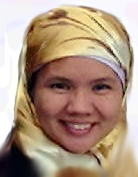Communities of Practice and the Building of the UP Faculty
(An impromptu concept note presented at the UP System Faculty Workshops, February 26-27, 2013)
- · A COP has an informal hierarchy of knowledge-holders and experts, those studying to be experts, moonlighters, and initiates.
- Initiation requires a gradual inclusion into the ways that the community operates, their values and methods of doing, their culture and language.
- Initiation requires that the initiate be given, at the beginning, small responsibilities (sweeping the floor, running errands, sharpening minor tools), gradually increasing as the student increases in knowledge and proficiency.
- As the students move up the ranks, the community accommodates their increasing mastership by giving them opportunities for mentoring. Mentoring while learning is recognized by the community, and the emergent expertise is seen as a community trust, and is appreciated as a community asset.
- 1. Community culture. Many aspects of community behavior are made smooth and seamless through the appreciation of community culture. These are tacit forms of behavior that encapsulate community values and procedures, and as such are gradually imbibed. The manner that this can be imbibed may be facilitated by simple institutional interventions (i.e., common lunch breaks? A department reading area?), and may actually be hindered by some kinds of institutional policy. These interventions are usually better determined at the local level by understanding the local dynamics of community interactions. Community culture also can be as a lens to view questions of tenure and promotions: At which point in the development continuum would we consider a faculty member as deserving of tenure? What kinds of community activities are considered during promotions? How do we document and codify these activities?
- 2. Community stability. A large community with a wide initiate base and a full complement of number cards all the way up to the face cards has greater resources and greater stability than smaller communities. We tend to imagine our communities to be small and department-based (as this is how we operate on a daily basis), but we can extend this thinking to include similar departments from across colleges and across units, thereby increasing our community stability and the ways that we can generate and share knowledge and skills. The university can think of institutional ways to pull together departments from different units, yet again taking into consideration the localized nature of communities of practice and allowing for leeway for the spontaneous generation of community spirit.
- 3. Initiation. Our students can be considered as initiates into our communities of practice. However, unlike the apprenticeship model, we tend to inform them of the codified forms of community knowledge (otherwise known as the curriculum) and under-inform them of the skills, mindsets, and values of the community. They obtain some experience of this in their practicums and theses, but in very few instances before that. It can also be noted that these forms of training usually give emphasis on individual accomplishments over community accomplishments.
- 4. Networking. Many communities have members who, while they may not be the most brilliant or the most productive, become centers through which the community becomes cohesive. These are the community builders, who tacitly understand the nature of network building within the community and actively work towards achieving it. Members usually gravitate towards this person, as they hold the hearts of the community members and are usually relied on to facilitate referrals and requests as well as mediate in cases of misunderstanding or dispute. These persons hold influence in communities of practice but their contributions are usually not recognized by policy.
- 5. Intersecting communities. A community member is usually a member of many other communities, and their presence and participation in one community is colored by their participation in their other communities. Some members just coast along the outskirts of various communities, and these members may be useful as wild cards who bring in new ideas and new ways of seeing.
- 6. Shared crisis. It is interesting how weathering a shared crisis could influence the creation of a community by giving its members a common history and requiring relationships to gel together in many different levels.

